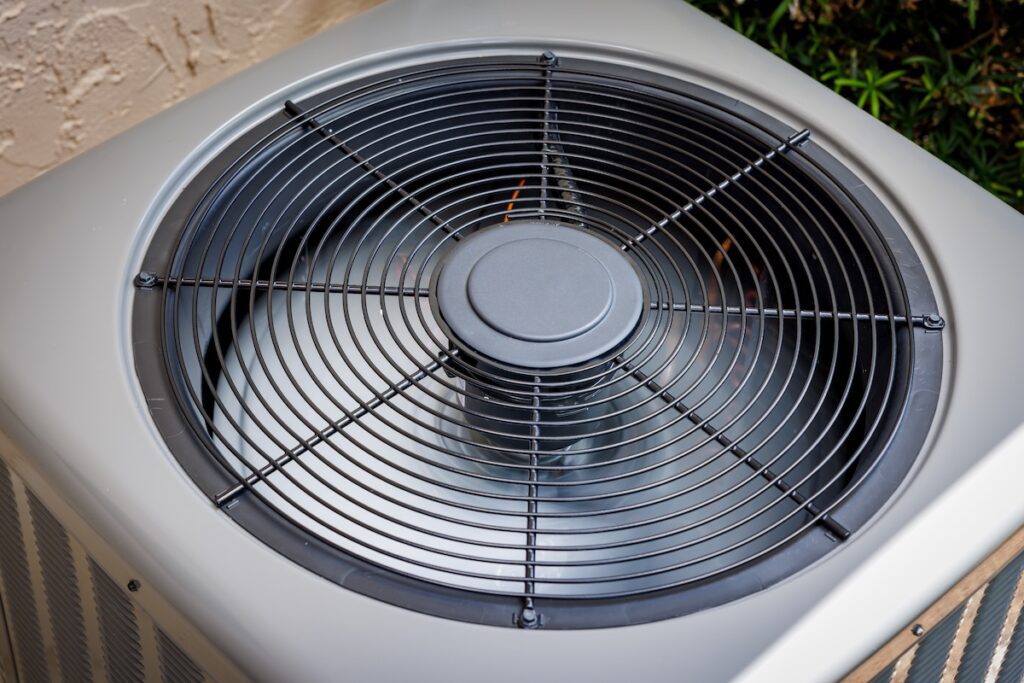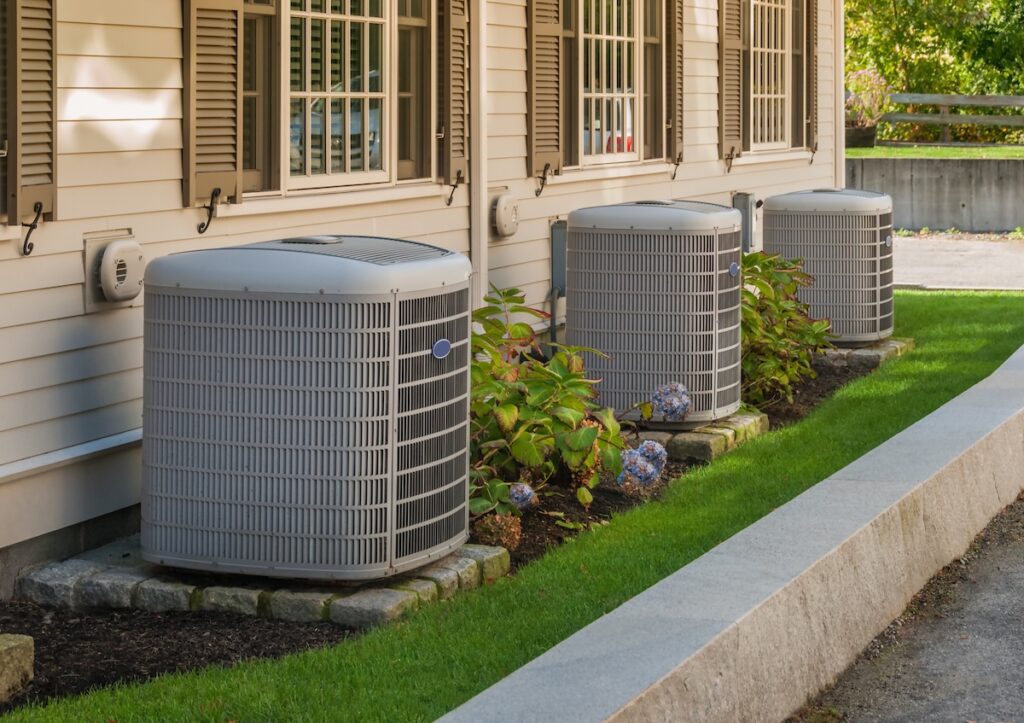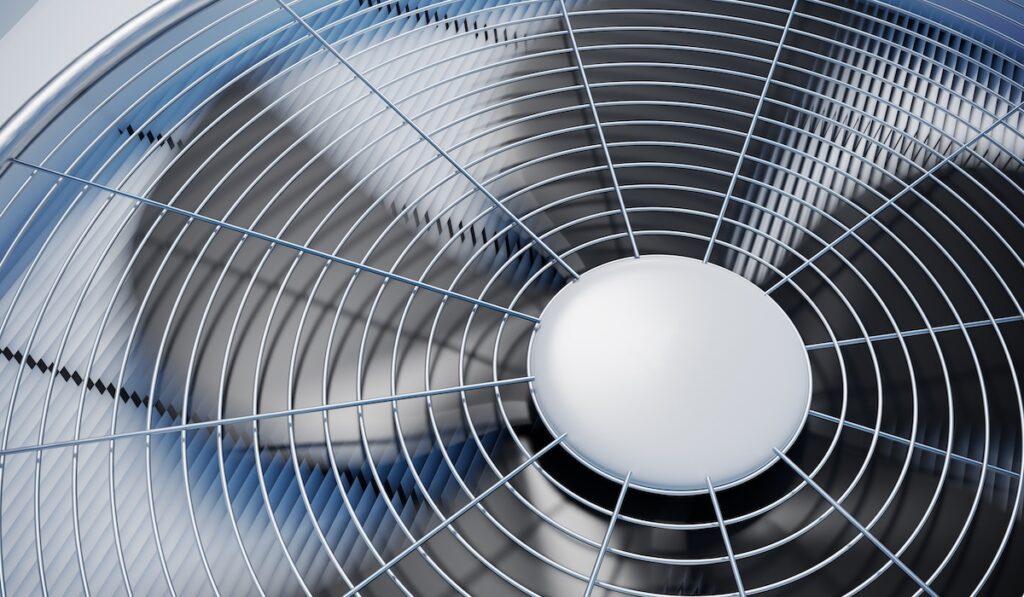Air conditioning is vital for comfort, especially during scorching summer days. If your AC suddenly stops working properly, a clogged drain line could be to blame. This blog will guide you step-by-step on how to unclog AC drain line and help you avoid costly repairs.
Here’s what we’ll cover:
- What is an AC drain line, and why does it clog?
- Step-by-step guide on unclogging your AC drain line
- How to prevent future clogs
🤔 What is an AC Drain Line, and Why Does It Clog?

The AC drain line is part of your cooling system, responsible for removing condensation created as your air conditioner cools your home. This moisture is expelled through a pipe connected to your AC unit.
Over time, dirt, dust, mold, and algae can build up inside the drain line, forming a blockage. When condensation can’t escape, it can lead to water leaks, reduced system efficiency, and even damage to your home.
Signs Your AC Drain Line Is Clogged
- Water pooling around your air conditioning unit
- Unpleasant musty odors coming from your vents
- Reduced cooling efficiency or your unit shutting down entirely
- Unexplained humidity inside your home
✅ 6 Steps to Unclog Your AC Drain Line

Follow these six simple steps to get your AC drain line flowing freely again:
Tools You’ll Need to Clear the Clog
- A wet/dry vacuum
- Bucket and towels (for potential water spills)
- A funnel
- Distilled vinegar or a mild cleaning solution
- A stiff brush or pipe cleaner
- Rubber gloves
1. Turn Off Your AC System
Safety should always come first when working with any electrical appliance, and your air conditioning system is no exception. Before beginning, make sure your AC system is completely powered down to avoid any potential electrical hazards. Start by locating your thermostat and turning the system to the “Off” position. Then, find the circuit breaker panel in your home and identify the breaker switch connected to your AC unit. Flip it to the “Off” position to ensure there is no electricity flowing to the unit. This double-checking step is crucial to avoid accidental shocks or damage to the system while you’re working. Once you’ve powered down the system, give it a moment to ensure it is fully shut off and no longer running. Only proceed when you’re confident the system is safe to handle.
2. Locate the Drain Line
The AC drain line is a small but essential component of your air conditioning system. It is responsible for removing the condensation that builds up as your AC cools the air. This line is typically made of PVC pipe and can vary in placement depending on your AC system’s design. To locate it, start by inspecting the area near your outdoor AC unit. The drain line may exit near the base of the outdoor unit or be positioned close to an exterior wall of your home. If you cannot find it outside, check inside near the air handler, often located in a basement, attic, or utility closet. Look for a small pipe connected to the evaporator coil. Some systems will have a removable cap or an open end that provides easy access to the drain line. Take note of its exact location and how it connects to other components, as this will make the cleaning process more straightforward.
3. Remove Standing Water
If water is pooling around your AC unit or near the drain line, it’s important to address it before proceeding with the cleaning process. Standing water can lead to damage, encourage mold growth, and create unsanitary conditions. Start by assessing the area around the unit and identifying any water buildup. Using a wet/dry vacuum is the most efficient way to remove the water. Position the vacuum’s nozzle over the puddles and suction out as much water as possible. Keep a bucket nearby to collect the extracted water if needed. If you don’t have a vacuum, absorb the moisture using towels or sponges, and wring them out into a bucket. Be thorough in removing all visible water, as leaving any behind could make the cleaning process messier and more challenging. Once the area is dry, you’ll be ready to move on to clearing the drain line itself.
4. Clear the Drain Line with a Vacuum
Clogs in the drain line are a common issue caused by dirt, debris, mold, or algae buildup. To clear these blockages, you’ll need a wet/dry vacuum. Begin by attaching the vacuum’s hose to the opening of the drain line. This may require some creativity to create a secure connection. If the fit isn’t tight, use duct tape or a similar material to seal the gap and create an airtight seal. A proper seal is critical to ensure the vacuum’s suction is strong enough to pull out the clog. Once the vacuum is securely attached, turn it on and let it run for several minutes. You may hear or see debris being sucked out of the pipe. Periodically check the vacuum’s canister to confirm it is collecting dirt and water from the drain line. After a few minutes, turn off the vacuum and remove the hose. Inspect the drain line opening for any remaining debris, and repeat the process if necessary. This step should restore the drain line’s ability to carry condensation away efficiently.
5. Flush the Line with Vinegar
After clearing the drain line of major blockages, it’s important to take an additional step to prevent future clogs. Pouring a cleaning solution into the drain line helps dissolve any lingering buildup, such as mold, algae, or mineral deposits. Start by using distilled vinegar, as it’s a natural, safe, and effective cleaner. Carefully pour about one cup of vinegar into the open end of the drain line. If you prefer, you can use a mild cleaning solution designed specifically for AC systems. Allow the vinegar to sit in the drain line for at least 30 minutes. This gives it time to break down any remaining residue along the walls of the pipe. During this time, avoid rinsing or flushing the line with water, as this will dilute the vinegar and reduce its effectiveness. After 30 minutes, the line will be ready for a final rinse or test to ensure it is fully cleaned.
6. Test Your AC Unit
Once you’ve cleaned and flushed the drain line, it’s time to test your AC system to ensure everything is functioning correctly. Start by turning the circuit breaker for the AC unit back to the “On” position. Then, switch the system on at the thermostat and allow it to run for a few minutes. Observe the system closely during this time. Check that cool air is flowing from the vents as expected and that condensation is draining freely from the cleared line. Look for signs of any remaining issues, such as water pooling around the unit, an unusual lack of cooling, or strange noises. If the system appears to be running smoothly and the drain line is clear, your maintenance is complete. However, if problems persist, you may need to repeat the cleaning process or seek assistance from an HVAC professional to address deeper issues. Regularly maintaining your AC system will help prevent clogs and ensure it continues to run efficiently.
🔎 How to Prevent Future Clogs

Regular maintenance is the best way to keep your AC drain line from clogging again. Here are some tips to maintain a healthy system:
Clean the Drain Line Monthly
Your AC system’s drain line plays a crucial role in removing condensation and ensuring proper system function. Over time, dirt, mold, and algae can build up inside the drain line, leading to clogs that may result in water damage or even system shutdowns. To avoid these issues, make it a habit to clean the drain line every month. You can do this by flushing it with white vinegar, which helps dissolve buildup and kills bacteria, or by using a commercial HVAC cleaner for a deeper clean. After cleaning, pour some water down the line to ensure it’s draining properly. Taking this simple step every month can save you from costly repairs and keep your AC running smoothly.
Install an In-Line Drain Trap
An in-line drain trap is a small but powerful addition to your AC system. This device catches debris, like dust, dirt, and even small insects, before they can enter and clog your system’s drain pipes. Without a drain trap, debris can accumulate over time, leading to blockages that may cause leaks, water damage, or even complete system failure. Installing an in-line drain trap is a straightforward process and a one-time investment that provides ongoing protection for your AC. By preventing blockages before they occur, you can avoid expensive repair bills and ensure your system operates efficiently for years to come.
Keep Your AC Unit’s Filters Clean
Air filters are one of the most important components of your AC system. They trap dust, pollen, pet dander, and other particles, ensuring clean air circulates throughout your home. However, when these filters become dirty or clogged, they restrict airflow, forcing your AC system to work harder and reducing its efficiency. This not only increases your energy bills but also shortens the lifespan of your equipment. To avoid these issues, check your filters at least once a month, especially during peak cooling seasons. Clean reusable filters regularly or replace disposable ones every 1 to 3 months, depending on the manufacturer’s recommendation. Maintaining clean filters will enhance air quality, improve system performance, and help your AC last longer.
Schedule Annual AC Tune-Ups
Scheduling an annual AC tune-up is one of the best ways to keep your system in top shape. During a professional tune-up, HVAC technicians thoroughly inspect, clean, and optimize your unit. They check for issues like refrigerant leaks, worn-out components, or electrical problems, addressing them before they escalate into major repairs. Regular maintenance also ensures your system operates at peak efficiency, saving you money on energy costs while keeping your home comfortable. Trustworthy HVAC companies, like Palmetto Air Conditioning, offer comprehensive tune-up services that include cleaning the coils, tightening electrical connections, and checking system performance. By investing in yearly maintenance, you can extend the life of your AC system and prevent unexpected breakdowns during the peak of summer.
👨🔧 Unclogged AC Drains
At Palmetto Air Conditioning, we understand how frustrating a clogged AC drain line can be, and we’re here to help you keep your system running smoothly. With over 20 years of experience serving families and businesses in Lexington and the surrounding areas, our team combines expertise with exceptional customer service to ensure your HVAC system is in top shape.
Whether you need a quick fix, routine maintenance, or a full-system installation, you can trust us to get the job done right at an affordable price. Don’t let a small issue turn into a big problem—contact Palmetto Air Conditioning today for a free estimate and let us keep you cool and comfortable all year round!
